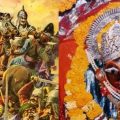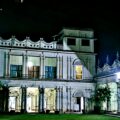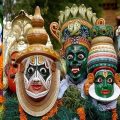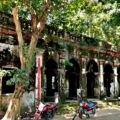Jessoreswari Kali: Shaktipeeth at Satkhira District in Bangladesh
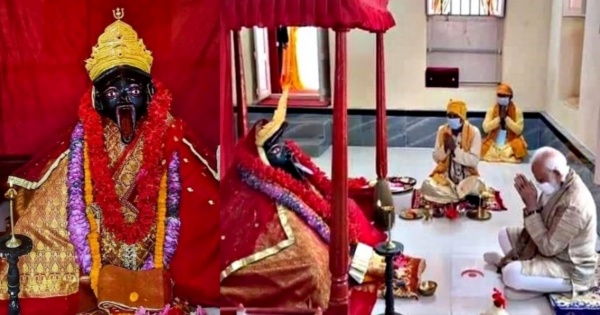 The Jessoreswari Kali Mandir, located at Ishwaripur village in Shyamnagar upazila of Satkhira district in Bangladesh, is regarded as one of the 51 Shaktipeeths of Sati. According to Puranic History, Shaktipeeths are the places where the various parts of Sati’s body are said to have fallen many thousands of years ago. Jessoreswari represents the site where a palm of Sati fell. The name ‘Jessoreswari’ means ‘Goddess of Jeshore’.
The Jessoreswari Kali Mandir, located at Ishwaripur village in Shyamnagar upazila of Satkhira district in Bangladesh, is regarded as one of the 51 Shaktipeeths of Sati. According to Puranic History, Shaktipeeths are the places where the various parts of Sati’s body are said to have fallen many thousands of years ago. Jessoreswari represents the site where a palm of Sati fell. The name ‘Jessoreswari’ means ‘Goddess of Jeshore’.
According to historical records, the General of Maharaja Pratapaditya discovered a luminant ray of light coming from the bushes. He came upon a piece of stone carved in the form of a human palm. Later, Pratapaditya started worshiping Kali at the spot where the carved stone was discovered. He built the Jessoreswari Kali temple at the spot. The temple was named after Jessore.
Daksha yagna and Sati’s self-immolation is the story behind the origin of Shaktipeeths. Shaktipeeths divine places are holy abodes of the Mother Goddess (Parashakti). These shrines are believed to be sanctified with the presence of Shakti due to the falling of body parts of the corpse of Sati Devi, when Lord Shiva carried it and wandered throughout Aryavartha in sorrow. Vishnu had to cut her body into 51 body parts which fell on Earth and became sacred sites. In another story, Shiva took Rudra Thandavam in mourning the death of the Godess Sati, in which the body of the Godess Sati was scattered into 51 parts which fell on Earth and became sacred sites.
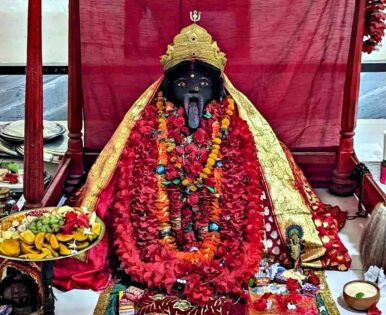
There are 51 Shaktipeeths located all around South Asia. Each temple have shrines for Shakti and Kalabhairava. The Shakti of this shrine is addressed as Jessoreswari and Bhairava as Chanda.
18 shrines are named as Mahashaktipeeths (major) in medieval Hindu texts. Most of these historic places of goddess worship are in India, but there are seven in Bangladesh, three in Pakistan, three in Nepal, and one each in China and Sri Lanka.
There were many legends in ancient and modern sources that document this evidence. A consensus view on the number and location of the precise sites where Sati’s corpse fell is lacking, although certain sites are more well-regarded than others.
Jessoreswari Kali shrine is believed to have been created by a brahmin named Anari. He created a 100-door temple for the Goddess. But the timeline is not known. Later it has been renovated by Lakshman Sen and Pratapaditya in their reigning periods.
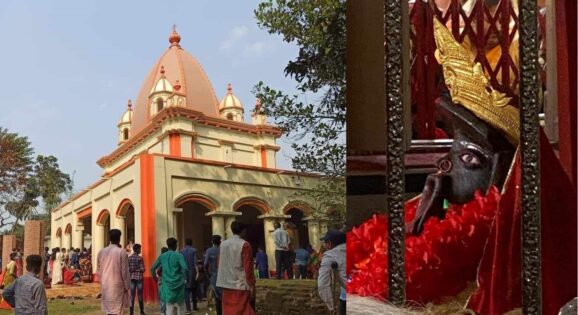
The temple is visited by pilgrims from all over the world, irrespective of sectarian differences. Worship is done by the priest every Saturday and Tuesday at noon time. But before 1971, there was a daily routine of worship. Every year on the day of Kali puja, the present Caretakers of the temple conduct a ceremony. There is also a mela that takes place around the temple compound.
A large rectangular covered platform called Natmondir has been erected adjacent to the main temple, from where the face of the goddess can be seen. This was renovated by Laxman Sen in the late 13th century, but the builders are not known. After 1971, it crumbled. Now only the pillars can be seen.
Indian Prime Minister Narendra Modi visited the Jessoreswari Kali Temple on March 27, 2021. Shyamnagar was decorated around the arrival of Modi in this historical temple.
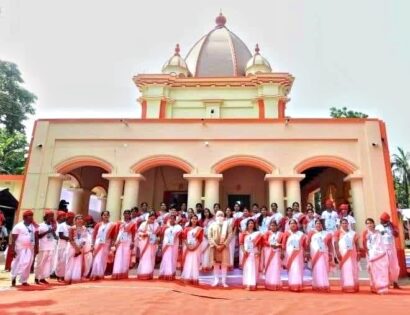
Six helipads were built in the area, including the grounds of Sobhan Multipurpose Secondary School in Ishwaripur, for the landing of helicopters carrying Modi and his entourage. The road he took to the temple area after getting off the helicopter was being renovated earlier. Members of the power department worked to ensure an uninterrupted power supply. If he wanted to stay there before and after visiting the temple, work was underway to equip two guest rooms of the temple as well as construct toilets with alternative restrooms.
The broken part of the wall had already been repaired by painting the temple and the wall. At the entrance of the temple, a 200-year-old Battala section was being closed and a wide attic is being built with a mixture of bricks and stones.
This was the first visit of a head of Indian government to Shyamnagar, though ministers and dignitaries from different countries have visited Jessoreswari Kali Mandir before.
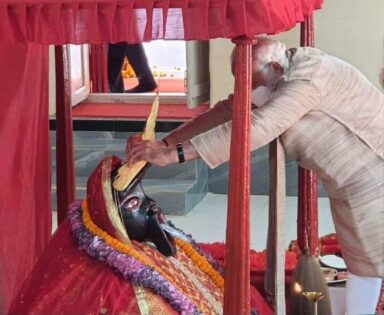
And that is why the arrival of Indian PM Modi created a festive atmosphere all over Satkhira including Shyamnagar. High-level delegations from both the countries have already visited Shyamnagar more than once to check the security situation surrounding Narendra Modi’s visit.
Images by the author.
Facebook Comments Box
The following two tabs change content below.

Sangram Datta
Sangram Datta is a history enthusiast from Bangladesh.

